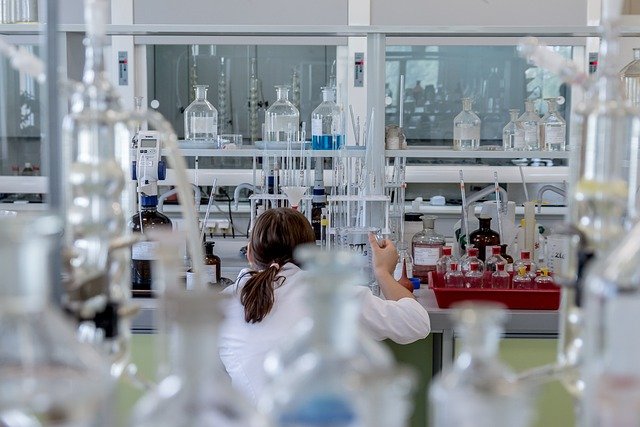Comprehensive Guide for Choosing Lab Reagents Effectively
Selecting the right lab reagents is a critical step in ensuring accurate, reliable, and reproducible experimental results. With countless suppliers, varying grades of purity, and specific application requirements, making informed choices can be challenging. A well-planned approach to reagent selection not only enhances the quality of your research but also optimizes costs and minimizes experimental errors. This guide provides a comprehensive overview of key factors to consider when choosing lab reagents effectively, from understanding reagent specifications to evaluating supplier credibility and storage requirements.

Comprehensive Guide for Choosing Lab Reagents Effectively
Selecting appropriate laboratory reagents requires careful consideration of multiple factors that affect both experimental outcomes and operational efficiency. The complexity of modern laboratory work demands a systematic approach to reagent procurement that balances quality requirements with practical considerations such as storage capabilities and budget constraints.
Understanding Reagent Grades and Specifications
Reagent grades serve as standardized classifications that indicate purity levels and intended applications. Analytical grade reagents typically offer 99% purity or higher and are suitable for quantitative analysis, while technical grade options may contain higher impurity levels but remain adequate for general laboratory use. Pharmaceutical grade reagents meet stringent regulatory requirements for drug development and clinical applications.
Specifications extend beyond purity percentages to include parameters such as water content, heavy metal concentrations, and specific contaminant limits. Understanding these specifications helps laboratories match reagent characteristics to experimental requirements, preventing costly errors and ensuring reproducible results.
Evaluating Supplier Quality and Reliability
Supplier assessment involves examining multiple factors that impact long-term laboratory operations. Quality management systems, such as ISO certifications, indicate a supplier’s commitment to consistent manufacturing standards. Documentation practices, including certificates of analysis and batch records, provide transparency regarding product quality and traceability.
Reliability encompasses delivery schedules, inventory management, and technical support capabilities. Suppliers with robust supply chains can maintain consistent availability, while those offering technical expertise help laboratories troubleshoot application-specific challenges and optimize experimental protocols.
Storage and Handling Requirements
Proper storage conditions preserve reagent integrity and extend shelf life, making storage requirements a crucial selection criterion. Temperature-sensitive reagents may require refrigeration or freezing, while light-sensitive compounds need protection from UV exposure. Humidity control becomes critical for hygroscopic materials that absorb moisture from the environment.
Handling considerations include packaging formats, dispensing methods, and safety requirements. Bulk packaging may offer cost advantages but requires appropriate transfer equipment and storage facilities. Single-use formats provide convenience and reduce contamination risks but typically involve higher per-unit costs.
Cost Optimization Strategies
Cost optimization involves analyzing total ownership expenses rather than focusing solely on purchase prices. Bulk purchasing can reduce per-unit costs but requires adequate storage capacity and usage planning to prevent waste from expired products. Volume commitments may qualify laboratories for preferred pricing tiers or extended payment terms.
Alternative sourcing strategies include evaluating generic equivalents and considering regional suppliers to reduce shipping costs. However, cost savings must be balanced against quality requirements and regulatory compliance needs, particularly in regulated industries where reagent changes require validation studies.
| Reagent Category | Supplier | Grade Options | Cost Estimation (per kg) |
|---|---|---|---|
| Buffer Solutions | Sigma-Aldrich | Analytical/Molecular Biology | $50-150 |
| Organic Solvents | Fisher Scientific | HPLC/ACS Grade | $30-200 |
| Acids and Bases | VWR International | Technical/Analytical | $25-100 |
| Biochemical Reagents | Thermo Fisher | Research/Clinical Grade | $100-500 |
| Standards and References | NIST | Certified Reference Materials | $200-1000 |
Prices, rates, or cost estimates mentioned in this article are based on the latest available information but may change over time. Independent research is advised before making financial decisions.
Quality assurance protocols should include incoming inspection procedures, proper storage monitoring, and regular inventory audits. These practices help maintain reagent integrity throughout their lifecycle and ensure compliance with laboratory accreditation requirements.
Successful reagent selection requires balancing multiple competing factors while maintaining focus on experimental objectives and quality standards. Regular supplier performance reviews and market assessments help laboratories adapt their procurement strategies to changing needs and emerging opportunities in the reagent marketplace.
This article is for informational purposes only and should not be considered medical advice. Please consult a qualified healthcare professional for personalized guidance and treatment.




